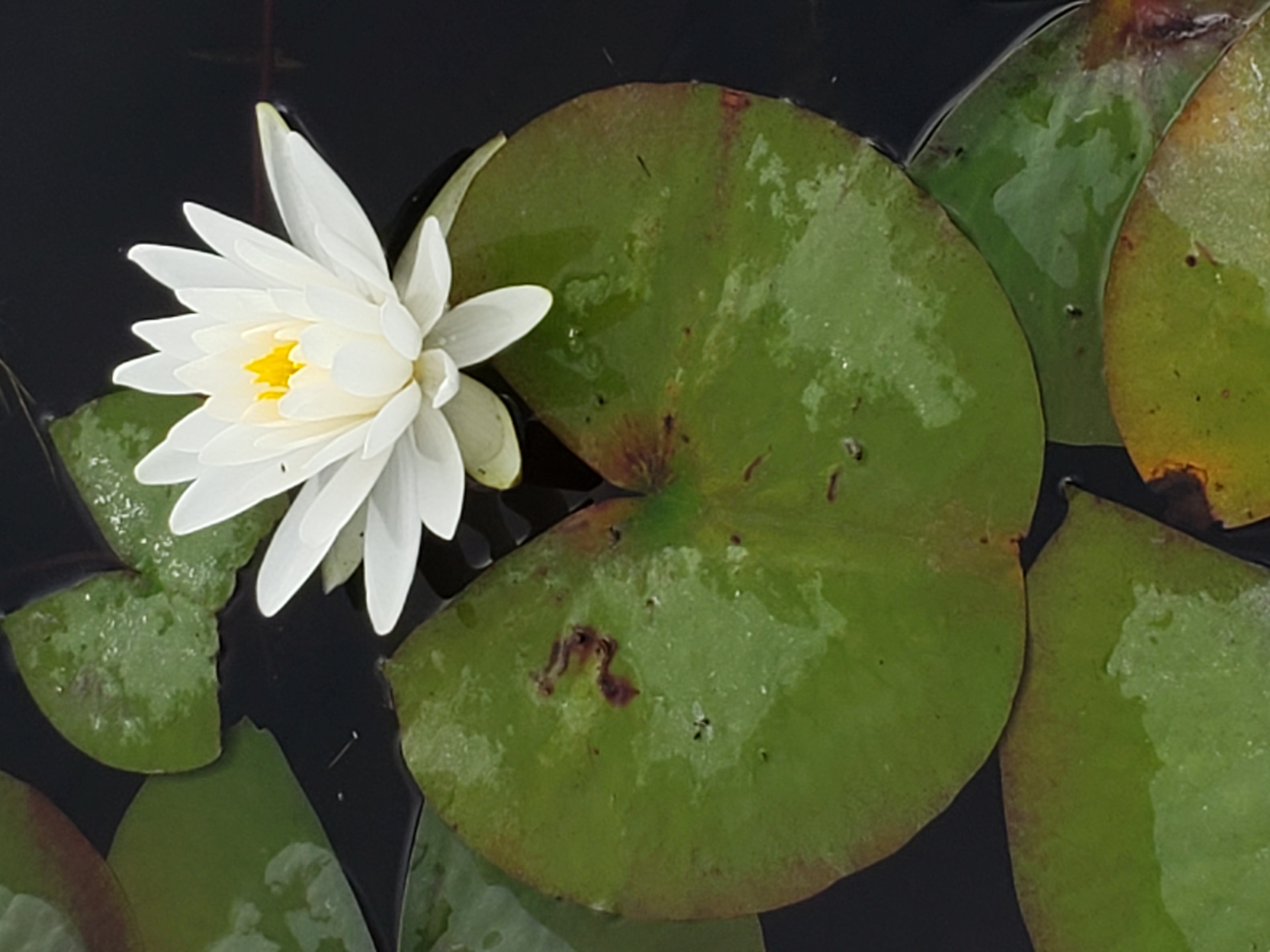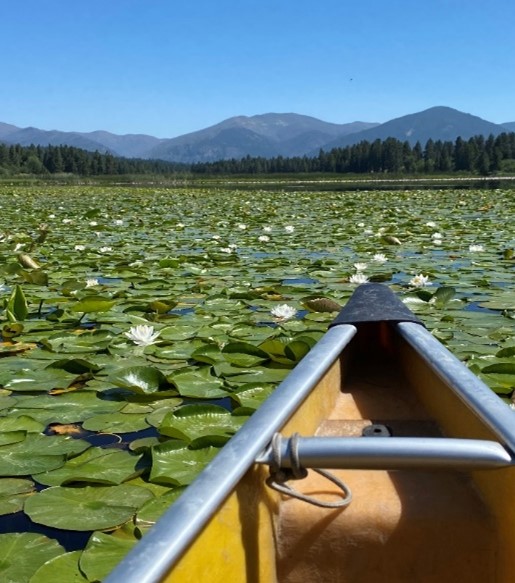Fragrant Water-lily (Nymphaea odorata)
by Chris Mascari, Missoula County AIS District, Email Chris Mascari
Introduction

Photo by Jane Mangold.
Fragrant water-lily goes by many names such as American water-lily, white water-lily, or simply invasive water-lily. Regardless of the name, this aquatic floating-leaved perennial species in the water-lily family Nymphaeaceaetraces its origins to the eastern and southern portions of the U.S. Fragrant water0lily likely gained its first foothold in the western U.S. during the late 1800s Alaska Pacific Yukon Exposition in Seattle. Its vibrant white flowers and charismatic fragrance made it a popular aquatic ornamental species and led to its spread into Montana in the 1930s.
Identification
Fragrant water-lily has a single, showy, many-petaled flower that blooms from June to August. Flowers are generally white but can be pink or, in rare occurrences, yellow. Floating leaves are about 10 inches in diameter, round, and leathery. Bisecting the leaf is a single slit that extends from the outer edge of the leaf inward along the radius of the leaf. Below the water’s surface, fragrant water-lily is anchored to a thick fleshy rhizome via an individual stalk that attaches to the center of the leaf.
Reproduction and Spread
Reproduction can occur both sexually and vegetatively. Fragrant water-lily propagates via rhizomes, allowing it to spread into interconnected aquatic habitats. Sexual reproduction occurs during flowering (June-August) and lasts for three to four days with pollen generally released at the end of the second day of flowering. Two pollinator species, the European honeybee (Apis mellifera) and the experienced sweat bee (Lasioglossum versatum), are the primary pollinators for fragrant water-lily and are accredited with most of the pollen transport that allows sexual reproduction to occur. Local-level propagation occurs when seeds and rhizomes release ethylene gas; the gas subsequently triggers germination of neighboring seeds and allows large quantities of seeds to mature and produce vegetative structures simultaneously.
Habitat

Photo by Chris Mascari.
Fragrant water-lily is usually found in slow moving, freshwater systems at depths of several inches to seven feet. Structural features enable fragrant water-lily to occupy a diverse range of growing conditions. The leaf has a much thicker cuticle than most aquatic plants, and the increased layers of tissue allow it to tolerate variable sunlight (direct, shaded, partially shaded), warm and cold-water systems (15-18°C), and systems of varied acidity.
Management
Fragrant water-lily is a noxious weed in Missoula County (Montana) and in Washington state. Prevention and proper shoreline management practices are key to preventing its spread and establishment. Clean, drain, and dry all recreational equipment to prevent further spread of fragrant water-lily. Mechanical control, via digging the rhizome from the substrate, can be effective on small populations if a thorough and consistent approach is taken. Benthic bottom barriers can also be effective; however, this approach is non-selective and can impact native aquatic vegetation. Chemical control can be effective for controlling large populations; in Montana a permit from the Department of Environmental Quality is required to apply herbicides over water. Extreme caution should be exercised when applying herbicides to aquatics systems, and it is preferred that professional aquatic managers be involved in application planning.
Further Information
For more information about this month's weed post, contact Extension Invasive Plant Specialist Jane Mangold. Past posts are available in the Monthly Weed Post Directory.
This weed post is also available as a printable PDF (621 KB).
